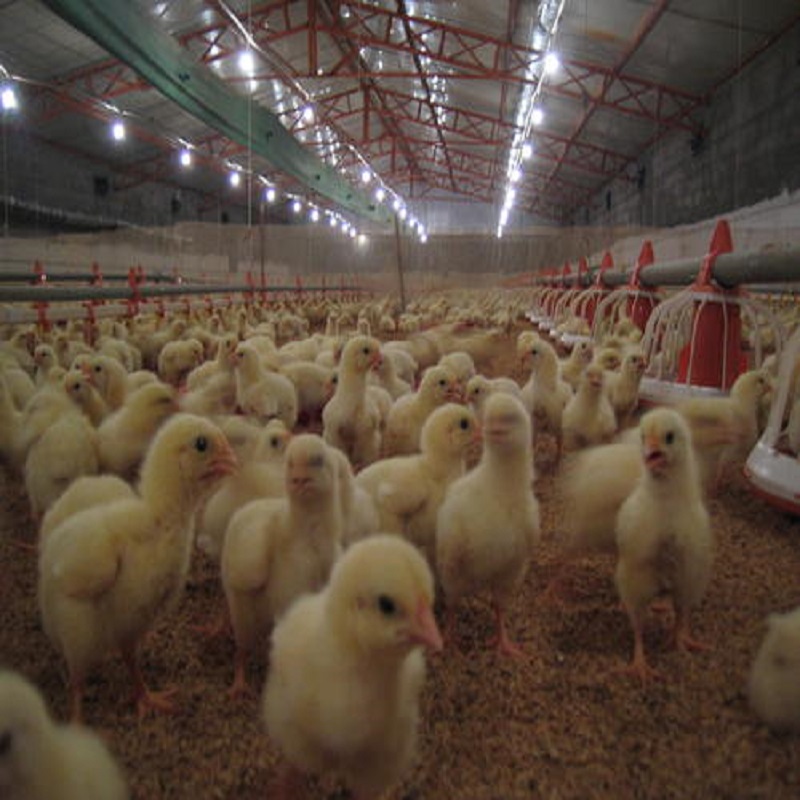Application of potassium diformate in chicken feed
Potassium diformate is a kind of organic acid salt, which is completely biodegradable, easy to operate, non corrosive, non-toxic to livestock and poultry. It is stable under acidic conditions, and can be decomposed into potassium formate and formic acid under neutral or alkaline conditions. It is finally degraded into CO2 and H2O in animals, and has no residue in the body. It can effectively inhibit gastrointestinal pathogens, Therefore, potassium dicarboxylate as a substitute for antibiotics has been widely valued, and it has been used in livestock and poultry breeding for nearly 20 years after the EU approved potassium dicarboxylate as a substitute for antibiotic growth promoting feed additive.
Application of potassium dicarboxylate in chicken diet
Adding 5g / kg potassium dicarboxylate to broiler diet can significantly increase body weight gain, slaughter rate, significantly reduce feed conversion rate, improve immune indexes, reduce gastrointestinal pH value, effectively control intestinal bacterial infection and promote intestinal health. Adding 4.5g/kg potassium dicarboxylate to the diet significantly increased the daily gain and feed reward of broilers, reaching the same effect as Flavomycin (3mg / kg).
The antibacterial activity of potassium dicarboxylate reduced the competition between microorganism and host for nutrients and the loss of endogenous nitrogen. It also reduced the incidence of subclinical infection and the secretion of immune mediators, thus improving the digestibility of protein and energy and reducing the production of ammonia and other growth inhibiting metabolites; Moreover, the decrease of intestinal pH value can stimulate the secretion and activity of trypsin, improve the digestion and absorption of nutrients, make amino acids more suitable for the deposition of protein in the body, so as to improve the lean rate of carcass. Selle et al. (2004) found that dietary potassium diformate level at 6G / kg could significantly increase daily gain and feed intake of broilers, but had no significant effect on feed efficiency. Dietary potassium diformate level at 12g / kg could increase nitrogen deposition by 5.6%. Zhou Li et al. (2009) showed that dietary potassium diformate significantly increased daily gain, feed conversion rate and digestibility of feed nutrients of broilers, and played a positive role in maintaining normal behavior of broilers under high temperature. Motoki et al. (2011) reported that 1% dietary potassium dicarboxylate could significantly increase the weight of broilers, breast muscle, thigh and wing, but had no effect on nitrogen deposition, intestinal pH and intestinal microflora. Hulu et al. (2009) found that adding 6G / kg potassium dicarboxylate to the diet can significantly improve muscle water holding capacity, and reduce the ph1h of breast and leg muscles, but has no significant effect on growth performance. Mikkelsen (2009) reported that potassium dicarboxylate can also reduce the number of Clostridium perfringens in the intestine. When the dietary potassium dicarboxylate content is 4.5g/kg, it can significantly reduce the mortality of broilers with necrotizing enteritis, but potassium dicarboxylate has no significant effect on the growth performance of broilers.
summary
Adding potassium dicarboxylate as an antibiotic substitute to animal feed can promote the digestion and absorption of feed nutrients, improve the growth performance and feed conversion rate of animals, regulate the structure of gastrointestinal microflora, effectively inhibit harmful bacteria, promote the healthy growth of animals, and reduce mortality.
